Why you can trust Tom's Hardware
The MPG271QR is one of the few monitors that includes a usable Eco picture mode. Usually, they limit brightness, but not in MSI’s case. It retains full calibration control and full light output.
Grayscale and Gamma Tracking
Our grayscale and gamma tests use Calman calibration software from Portrait Displays. We describe our grayscale and gamma tests in detail here.

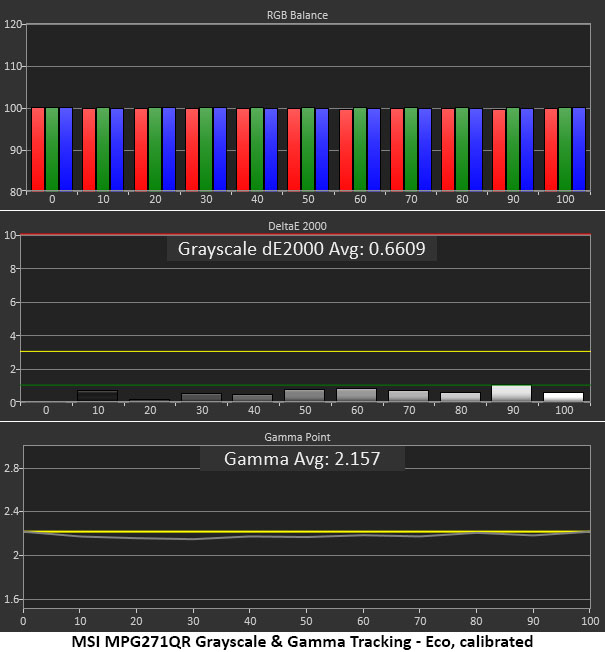

I put the MPG271QR in the doesn’t need calibration category because even though it has some grayscale errors, they are in red and blue, which are less visible than green. You can see a very slight purple tone in the brighter areas of the image. Gamma is almost perfectly in touch with the 2.2 reference line.
Calibration reduces all errors to less than 1dE, which is pro-level performance. Gamma is a tiny bit lighter but still near the reference level. This is excellent performance.
In the sRGB test, I noted the same warm tones. There is no correction available since the RGB sliders are grayed out. Gamma is set to the most precise version of the spec, which is closer to 2.4 rather than 2.2. This is also excellent performance.
Comparisons

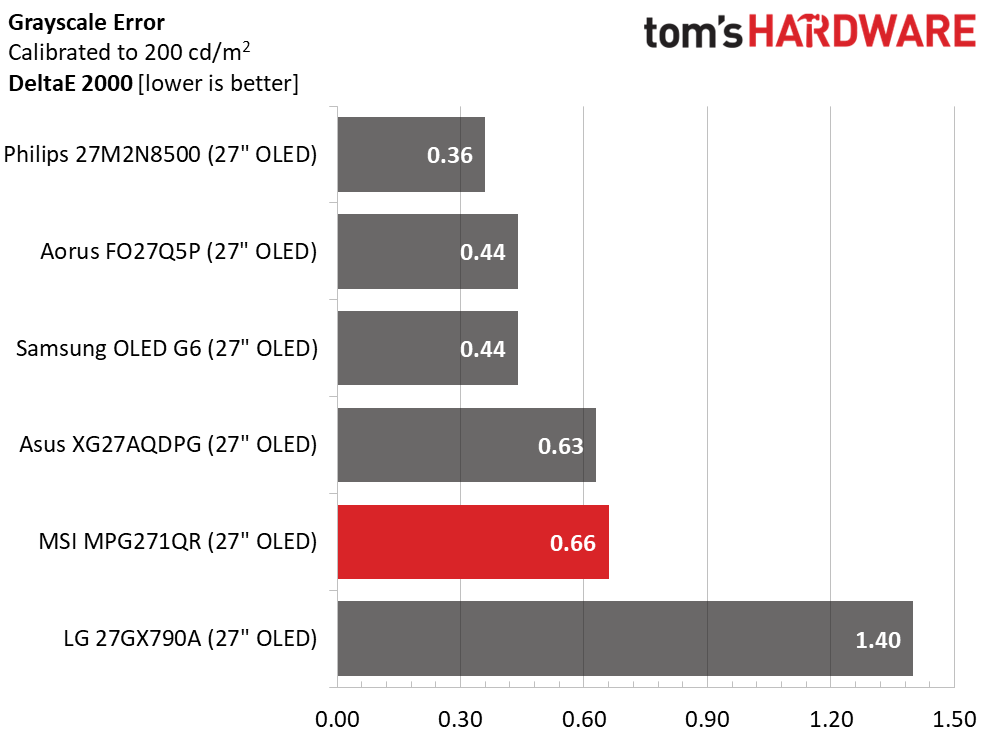
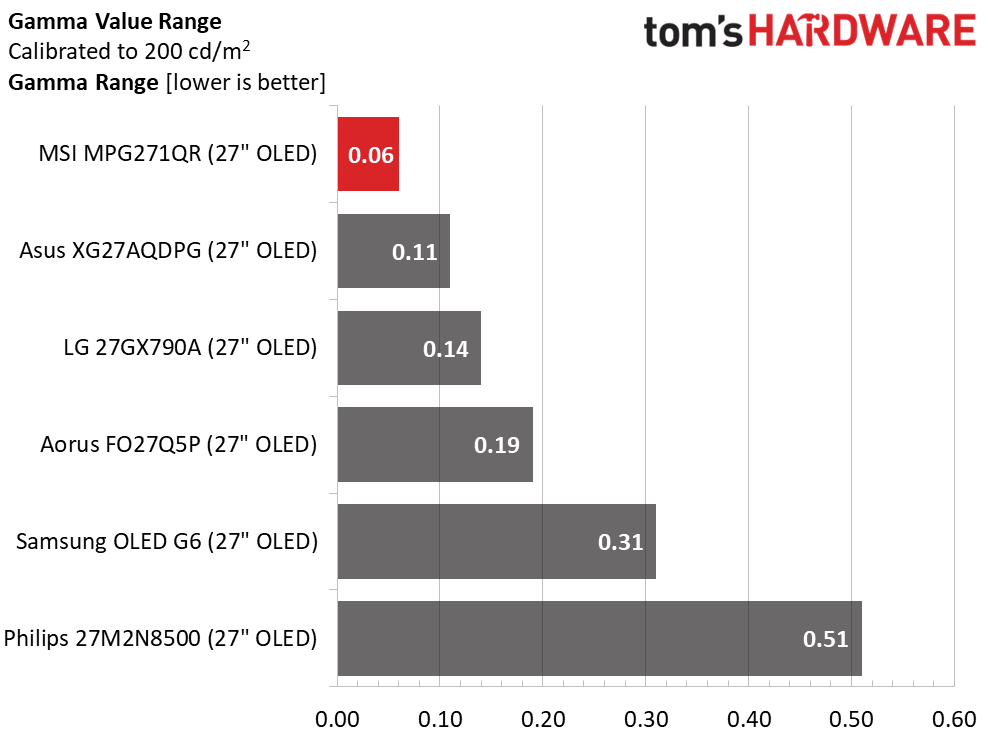
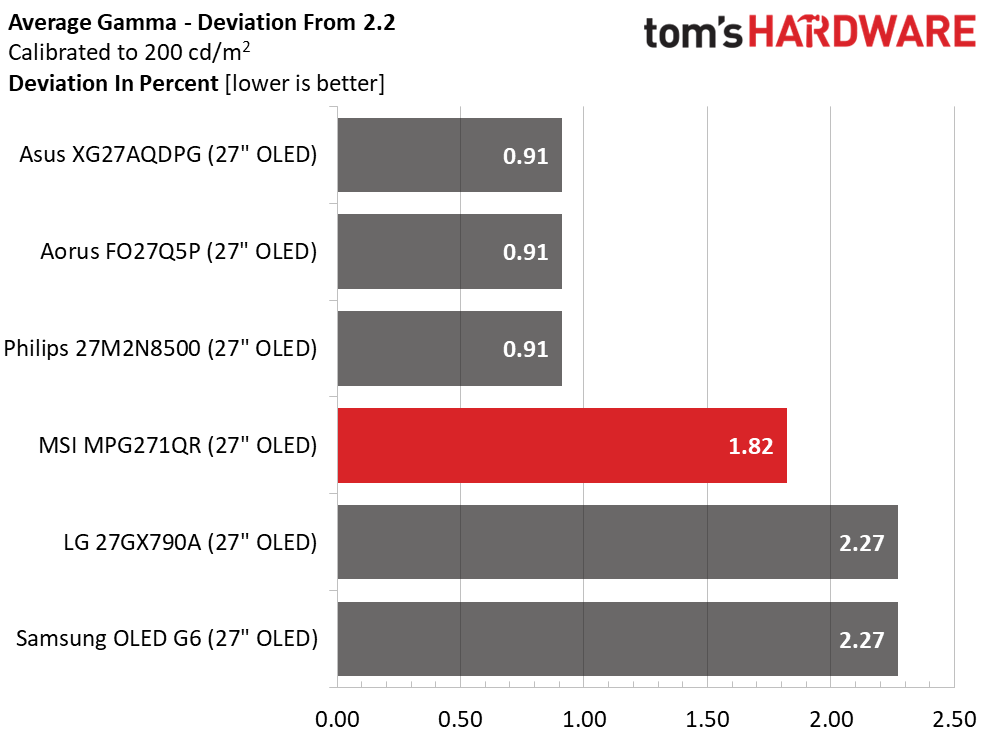
By the numbers, the MPG271QR is a bit lower in out-of-the-box grayscale accuracy than the other 500 Hz screens from Asus and Aorus. But since the errors are more red and blue than green, they are forgivable. With calibration, the error drops to 0.66dE, which is very low. In practice, you won’t see a difference between any of the monitors after calibration. They are all very accurate.
The MPG271QR has super-tight gamma with a tiny 0.06 range of values that puts it first in the group. The average of 2.16 is a tad light, but that error will be hard to spot in content.
Get Tom's Hardware's best news and in-depth reviews, straight to your inbox.
Color Gamut Accuracy
Our color gamut and volume testing use Portrait Displays’ Calman software. For details on our color gamut testing and volume calculations, click here.
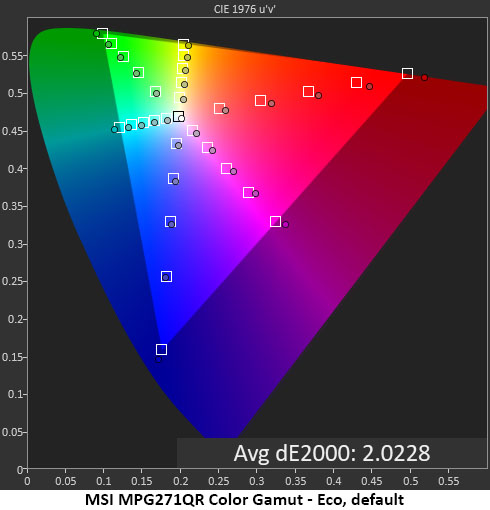
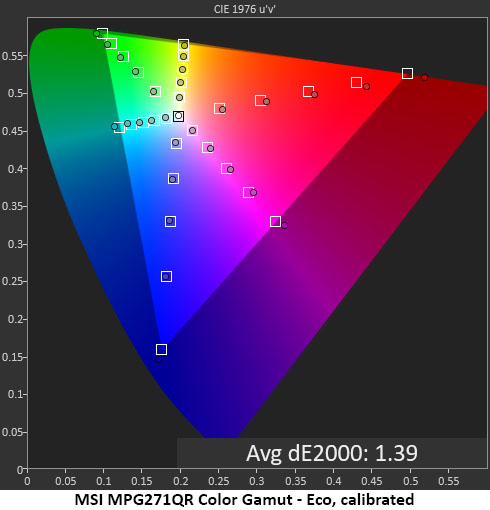

The MPG271QR has excellent out-of-the-box gamut accuracy with a 2.02dE score that puts all errors below the visible threshold. It makes good use of its extra color volume with some bonus red. Though the points show oversaturation, they do so linearly, which keeps the picture looking natural. Hue points are on or close to their targets as well. Calibration tightens up the yellow and cyan secondaries, making the average error even lower. This is excellent performance.
In the sRGB test, there are no errors to report. All points are on target with a 2.04dE average that is well below the visible threshold.
Comparisons

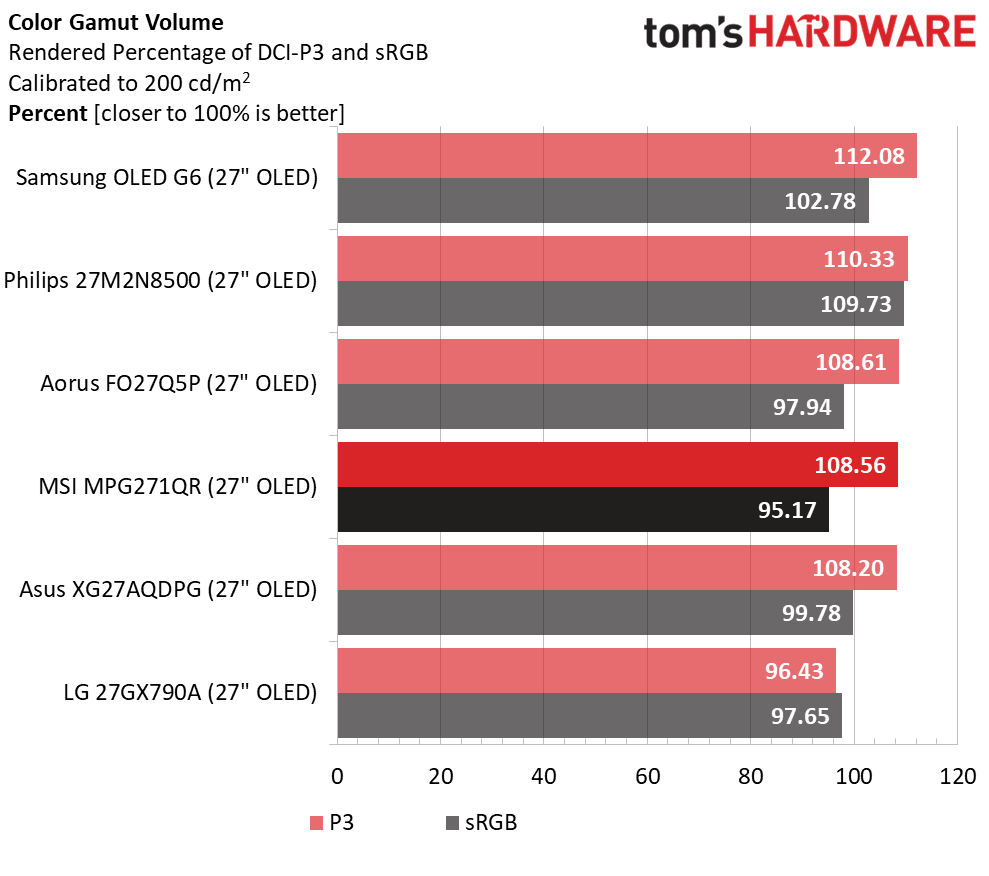
The MPG271QR takes third place in a very tight and accurate group of OLED monitors. 1.38dE is about as good as it gets and even the Philips’ 2.06dE is in pro-monitor territory. OLED, as a technology, is extremely precise in the color department.
In the volume test, the MPG271QR sits about equal with the Aorus and Asus, its nearest competitors, at 108% coverage of DCI-P3. The Samsung and Philips monitors have a tad more red and green, but two or four percent is a small amount. The MSI is extremely colorful and should satisfy most people.
Test Takeaway: Against its direct competitors, the MPG271QR is equal in color accuracy and gamut volume. Visual comparisons will be a wash. In the OLED category, it is also on par with other Quantum Dot displays. One point in its favor is the inclusion of an adjustable sRGB mode that retains access to color temp and gamma presets.
MORE: Best Gaming Monitors
MORE: How We Test PC Monitors
MORE: How to Buy a PC Monitor
Current page: Grayscale, Gamma and Color
Prev Page Brightness and Contrast Next Page HDR Performance
Christian Eberle is a Contributing Editor for Tom's Hardware US. He's a veteran reviewer of A/V equipment, specializing in monitors. Christian began his obsession with tech when he built his first PC in 1991, a 286 running DOS 3.0 at a blazing 12MHz. In 2006, he undertook training from the Imaging Science Foundation in video calibration and testing and thus started a passion for precise imaging that persists to this day. He is also a professional musician with a degree from the New England Conservatory as a classical bassoonist which he used to good effect as a performer with the West Point Army Band from 1987 to 2013. He enjoys watching movies and listening to high-end audio in his custom-built home theater and can be seen riding trails near his home on a race-ready ICE VTX recumbent trike. Christian enjoys the endless summer in Florida where he lives with his wife and Chihuahua and plays with orchestras around the state.
